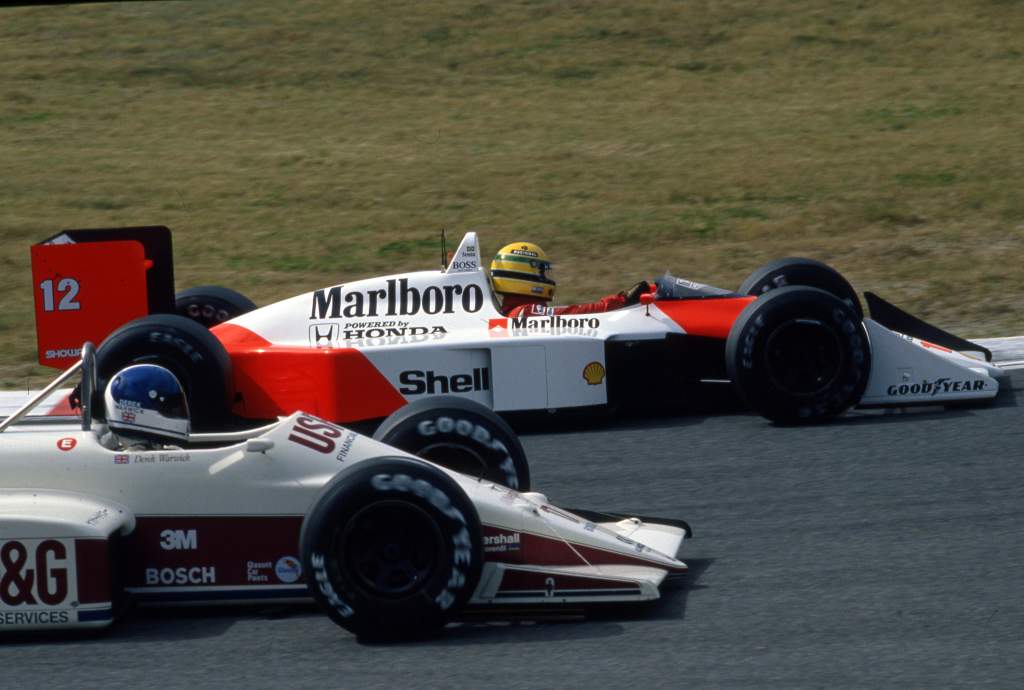Up Next

Formula 1 returns to Suzuka this weekend for the first Japanese Grand Prix in three years.
It’s easily one of the most popular circuits on the schedule with the drivers and has produced a plethora of iconic moments over the years, including acting as the stage for some truly classic F1 title deciders.
We asked our writers for their picks of the best drives at Suzuka. These aren’t necessarily the definitive 12 best-ever drives at Suzuka but are simply some of our favourites. Let us know your picks in the comments section below.
Robert Kubica – 2010
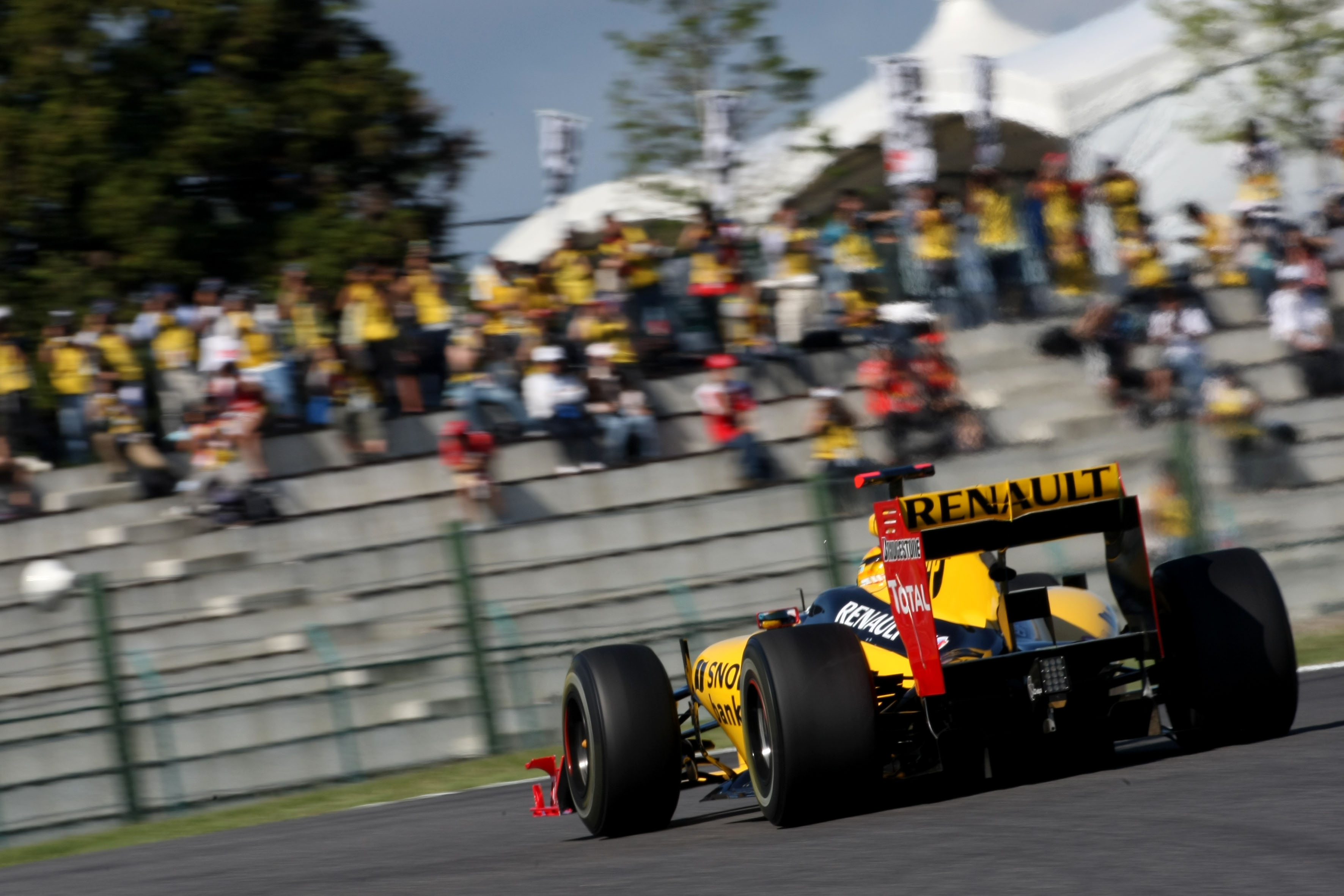
Given Robert Kubica managed just two laps before retiring when he shed his right-rear wheel while running second, with the majority of that mileage under the safety car, this might seem an odd choice. But Kubica was majestic in the Renault R30 that weekend.
While it was a nimble car, he had no business qualifying it fourth (he started third thanks to Lewis Hamilton’s grid penalty). That was impressive even before it emerged that he did so with the car not producing the downforce it should have done as a result of damage caused by water getting into the floor during Q1.
Despite lacking rear downforce, Kubica produced what he described as “one of the most amazing laps” in Q3 to qualify just 0.446s slower than Sebastian Vettel’s pole position time.
It stands as one of many monuments to what Kubica was capable of prior to the rallying crash that interrupted his F1 career just four months later. – Edd Straw
Kamui Kobayashi – 2012
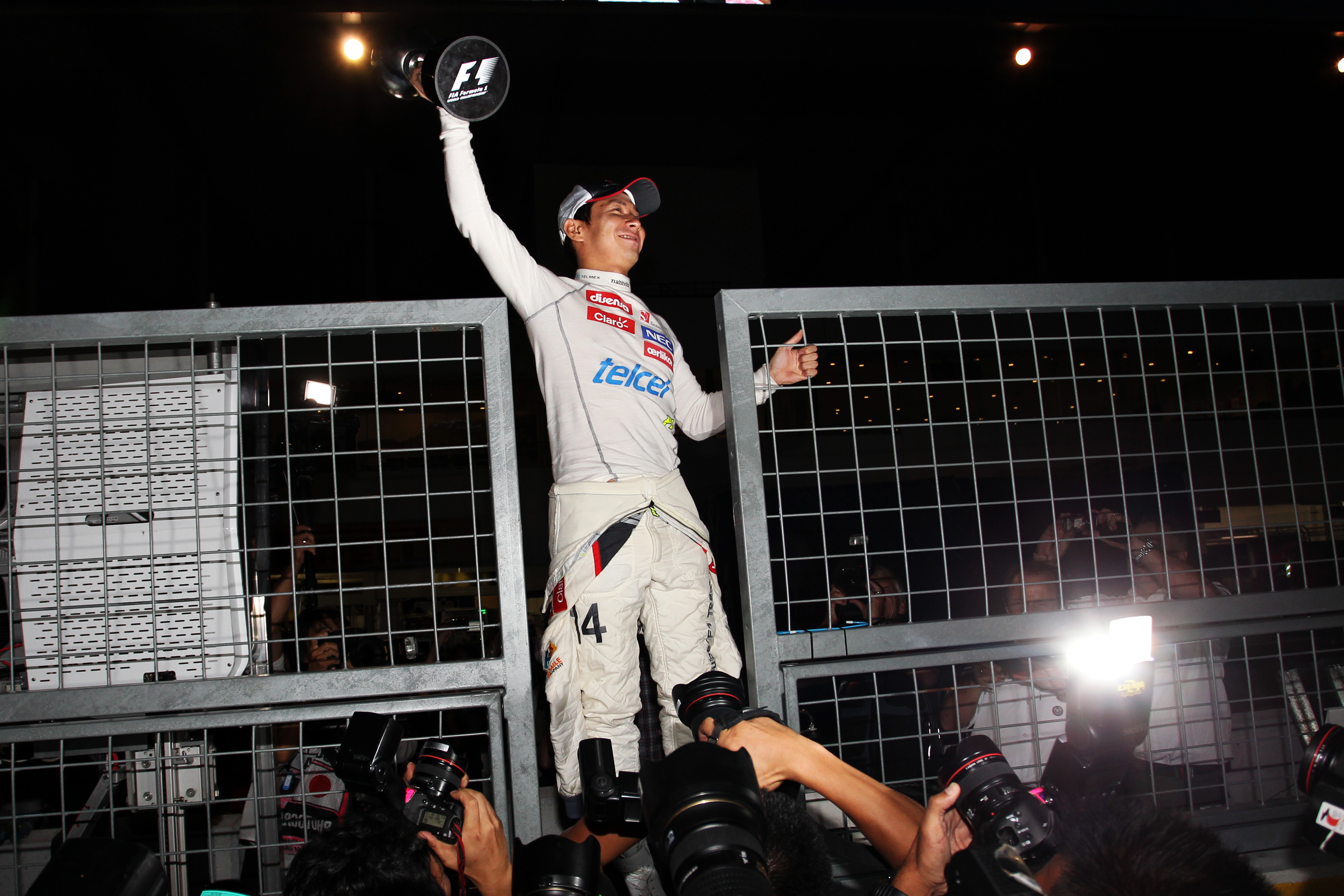
Kobayashi’s future at a cash-strapped Sauber was in severe doubt as he turned up to his home race at Suzuka in October of 2012.
There had been signs that Kobayashi had what it took at F1 level to emulate his countryman Aguri Suzuki in 1990 and snare a podium on home soil.
A fourth at Hockenheim in the surprise package of 2012, the Sauber C31 Ferrari, showed it could get the big points with the quirky, focused but above all spikily-quick Kobayashi at the wheel. At that stage of the season, he was comfortably up on Saturday afternoons upon his more heralded team-mate Sergio Perez.
It was all about qualifying. Three tenths quicker than Perez, Kobayashi took a crowd-pleasing fourth, even surviving an investigation scare for not slowing down under yellow flags.
The Sauber beat the front-row starting Mark Webber off the line and ran second for the first stint until Felipe Massa’s Ferrari undercut him in the first pit stop. But from there Kobayashi was solid and was able to just hold off Jenson Button’s McLaren for a third place that was cheered to the rafters by his adoring and pleasantly surprised public. – Sam Smith
Kimi Raikkonen – 2005
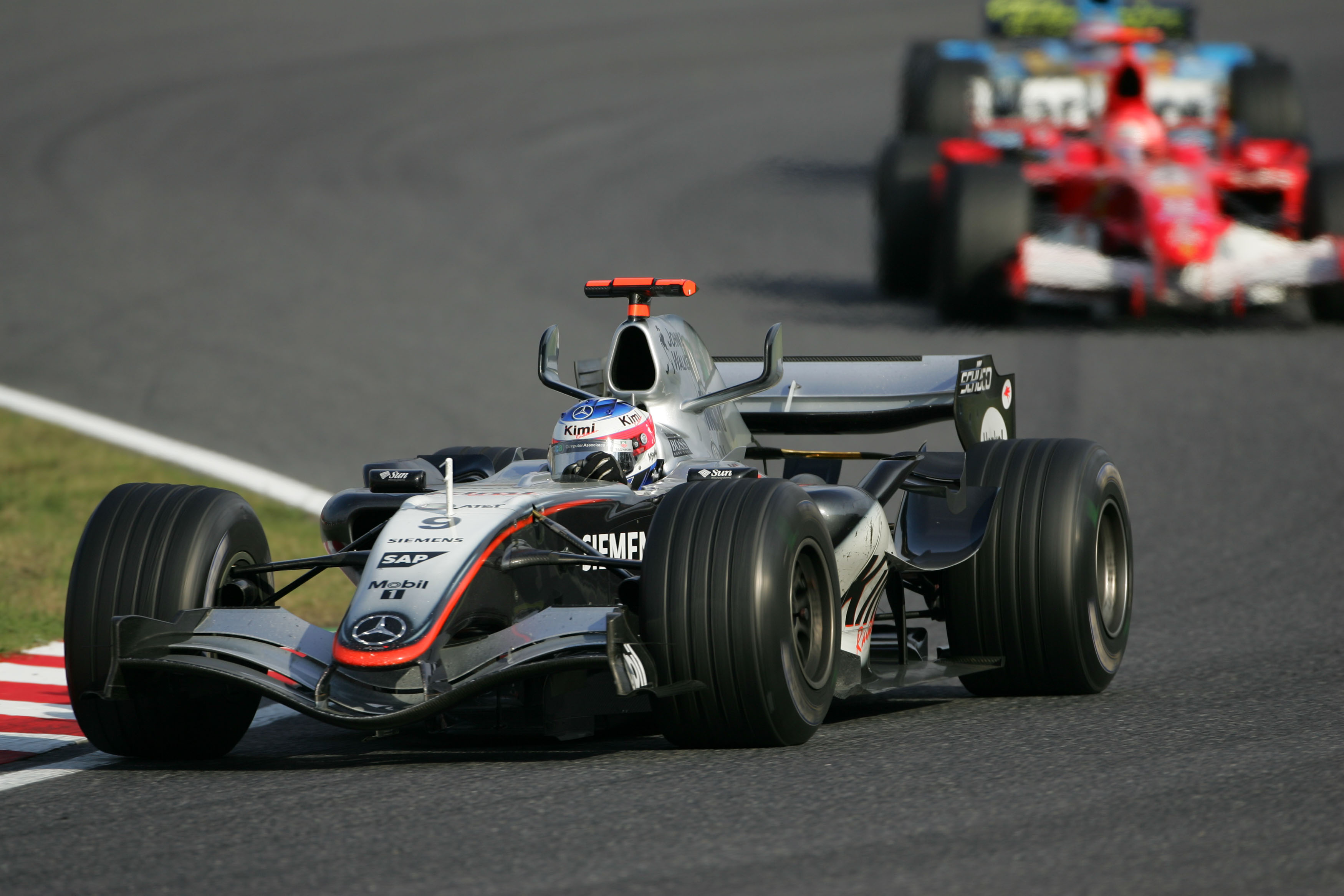
No ‘best drives at Suzuka’ list would be quite complete without mentioning Kimi Raikkonen’s stunning 17th-to-first charge at the 2005 Japanese GP.
This was like an early unintentional ‘reverse grid’ experiment with Raikkonen, Fernando Alonso, Michael Schumacher and Juan Pablo Montoya all starting at the back after a wet qualifying.
A Jacques Villeneuve-assisted crash put Montoya out on the opening lap and masked the only major error of Raikkonen’s race as he had to skip the final chicane while attempting to pass Williams stand-in Antonio Pizzonia.
From there it was full attack and full commitment which culiminated in a stunning final lap pass on Giancarlo Fisichella around the outside of the first corner.
That McLaren MP4-20 has to be right up there as one of the fastest F1 cars fail to win the title but Raikkonen delivered the goods at Suzuka and produced arguably the most memorable drive at the Japanese circuit ever. – Josh Suttill
Ayrton Senna – 1988
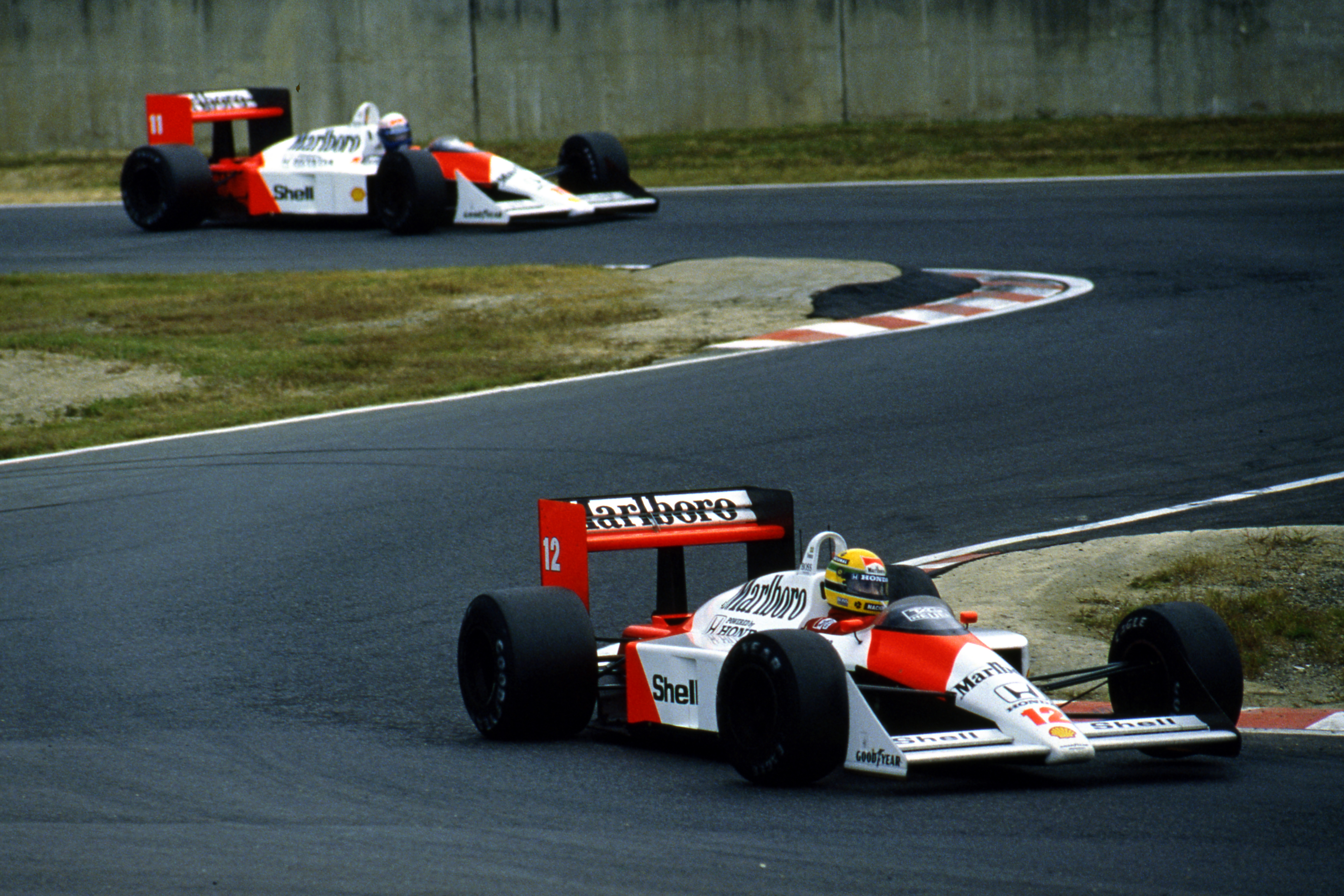
Ayrton Senna’s drive to secure his first title in 1988 at of all places – the one he was adored secondly only to his homeland of Brazil – has often had an asterisk placed next to its brilliance.
That’s because he was driving one of the greatest and most dominant cars of all-time – the statuesque McLaren MP4/4. But it was still an exceptional way to scoop a title.
On pole by a conclusive three tenths from team-mate Alain Prost, Senna seemed to have it all made to seal the title deal with a win. Yet he fluffed his lines as the race began, stalling and almost being collected by Piquet’s bulbous Lotus 100T. Dipping the clutch for a second time the Honda RA 168-E V6 bit and he was off – in 14th place!
By the end of the first lap, Senna was eighth!
Then in quick succession, Senna dispatched Alessandro Nannini, Ricardo Patrese, Michele Alboreto, Thierry Boutsen and Gerhard Berger. Ahead were Ivan Capelli’s giant-killing March and the prize of all prizes his team-mate Prost.
After a remarkable 100 metres of a fairy-tale lead from an audacious Capelli, both he and Prost bowed to the inevitable and Senna grabbed the lead from his nearest title rival with a sumptuous move while Prost lined up De Cesaris’ Rial to be lapped on the 23rd tour.
It was a poetic way for Senna to effectively wrap up the title. Let’s forget the nonsense of dropped points (too baffling, weird and banal to explain here in detail). Senna was a deserving champion but little did anyone know that only a fraction of his competitive thirst had been quenched at that stage of his career. – SS
Takuma Sato – 2002
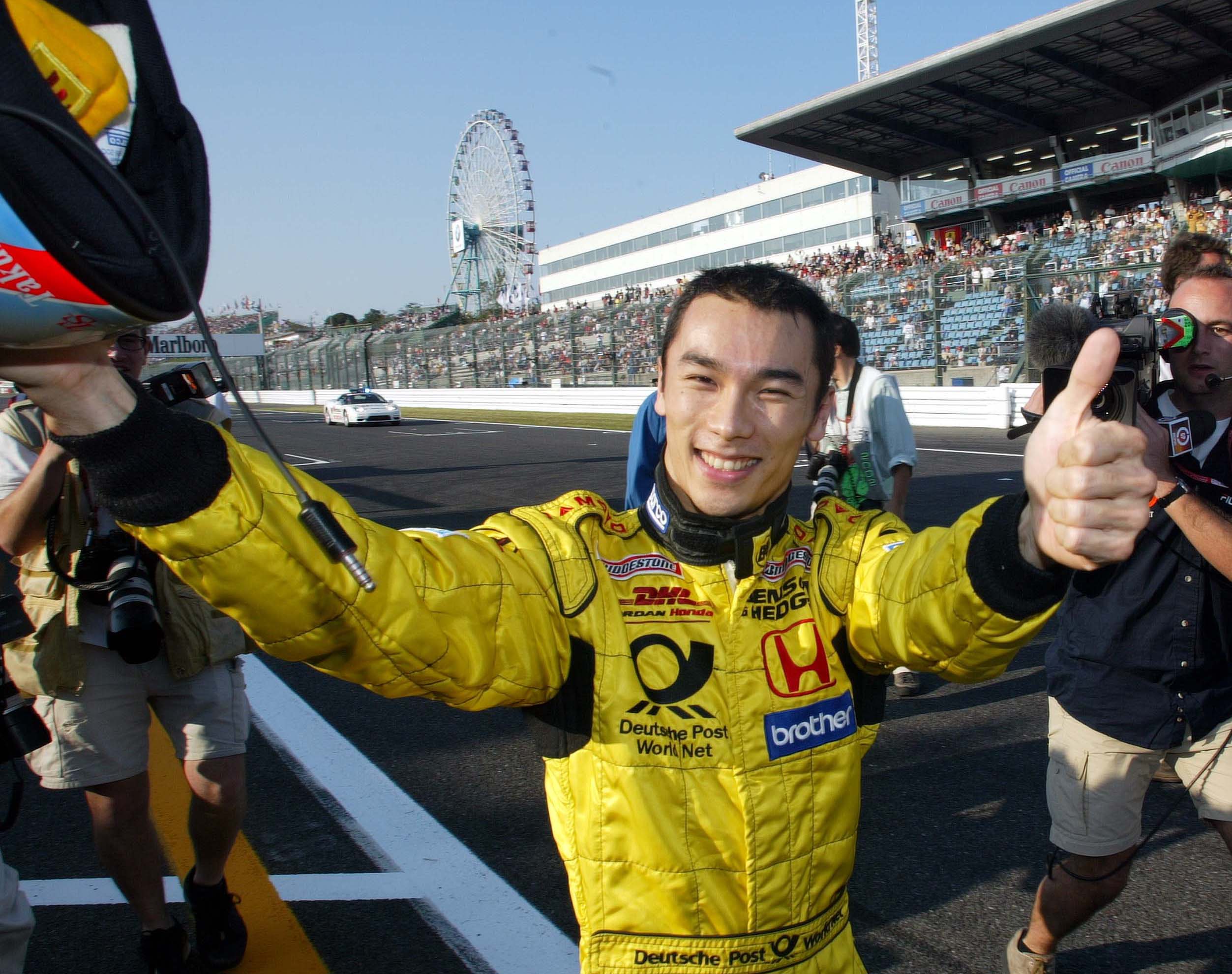
I never quite believed in home advantages in F1 but it’s hard to argue home soil didn’t play any part in Takuma Sato’s breakthrough F1 drive at the 2002 Japanese GP.
He was thoroughly beaten by his more experienced team-mate Giancarlo Fisichella throughout his rookie F1 season and gained a reputation as an error-prone driver.
But his Suzuka drive showed the potential in Sato as he outqualified Fisichella to claim seventh behind the Ferrari/McLaren/Williams drivers and then held his own against the faster Renaults in the grand prix.
He was aided by Jarno Trulli’s Renault expiring but Sato and Jordan managed to edge the second Renault of Jenson Button in a race-long duel and had a healthy advantage in the closing laps.
Jordan urged caution to Sato – “you’re in a safe position, nice and steady” – and the Japanese driver heeded that warning to bring home a valuable fifth-place finish.
Those two points for fifth vaulted Jordan from eighth to sixth in the constructors’ championship in the final race of the year.
It was also the penultimate ‘on merit’ top-five finish for Jordan in F1 as its descent down F1’s pecking order culminated in its demise in 2005.
Sato would repeat his Suzuka heroics with another stellar drive during a one-off appearance for BAR Honda one year later ahead of a full-time F1 comeback with the team in 2004. – JS
Romain Grosjean – 2018
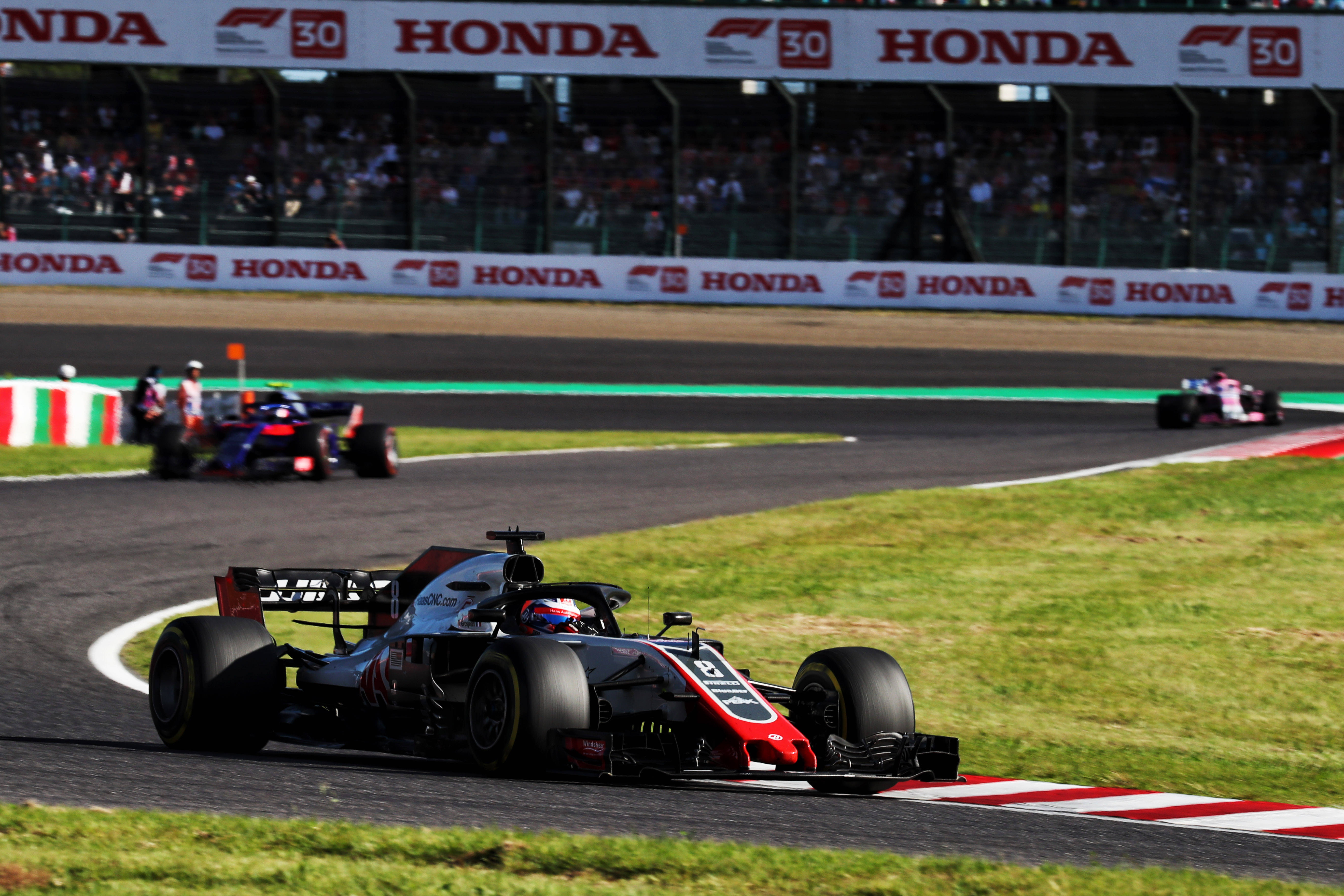
Romain Grosjean’s run to eighth for Haas might not stand out on paper, especially as Sergio Perez jumped past him heading into the chicane after a VSC restart. But what is often overlooked is that Grosjean had a serious problem for much of that race.
During the early-race safety-car period, the rear-left corner of the car had overheated. As a result, the rear trackrod shroud de-bonded and led to there being significant play in the wheel. The team wasn’t aware of this until after the race when the wheel could be moved around alarmingly by hand.
Grosjean had problems keeping the car in a straight line, and the car also misbehaved in the corners, but he dealt with it and was able to score points in a race that he probably should have retired from. – ES
Jenson Button – 2011
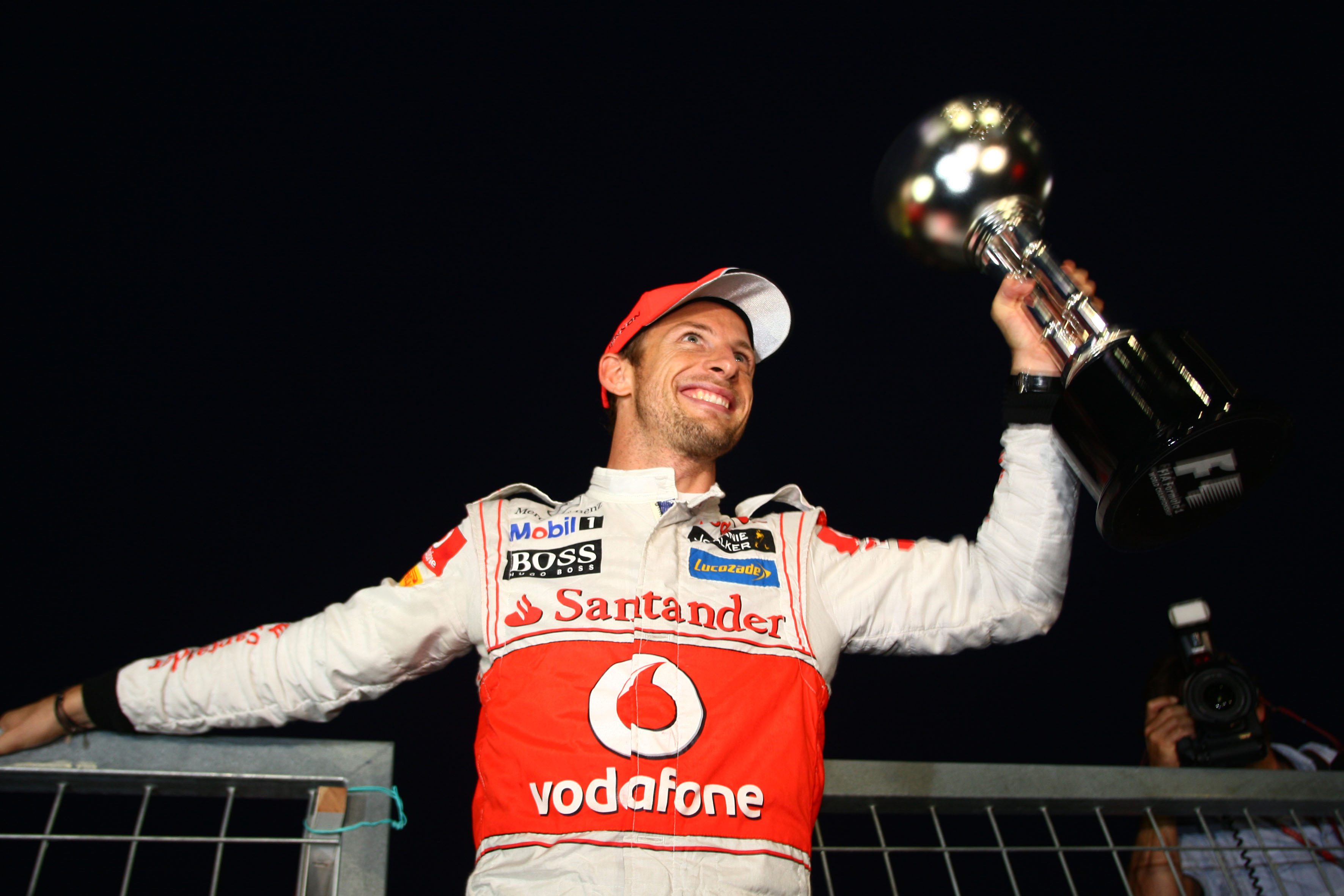
Jenson Button has driven very well and not won races, so picking out an all-time ‘best Button’ drive is very difficult. Of those he did win, I have no doubt the 2011 Japanese Grand Prix was his best.
Rudely squeezed onto the grass by Sebastian Vettel at the start, Button actually dropped to third behind McLaren team-mate Lewis Hamilton. But he repassed him in the first pitstops and then ran a lap longer than Vettel in the second stint to jump the Red Bull too.
Button didn’t have just one world champion to keep behind him to the end though. Fernando Alonso got into the mix for Ferrari and passed Vettel, but Button was able to keep both at arm’s length for the rest of the grand prix.
It was an unfussy, controlled and entirely merited victory, and a day Button proved that at his peak he could beat the very best. – Scott Mitchell
Lewis Hamilton – 2014

The 2014 Japanese Grand Prix is rightly remembered solely for the tragic accident that ultimately led to Jules Bianchi’s death. But Hamilton’s victory that day was outstanding, one that he felt was “very reminiscent of Silverstone 2008” in reference to what many regard as one of the great wet-weather wins.
Hamilton ran second behind polesitter Nico Rosberg after the safety-car start, then ran wide onto the runoff at Spoon Curve on his attacking inlap when heading in for slicks a lap after his Mercedes team-mate.
While chasing his team-mate, Hamilton caught an alarming moment – albeit with the use of the runoff – when he was a little slow manually closing the DRS entering the Turn 1 kink shortly after the overtaking aid had been enabled. But he was clearly the faster driver and he later went around the outside of Rosberg at the same corner to seal victory. – ES
Jean Alesi – 1995
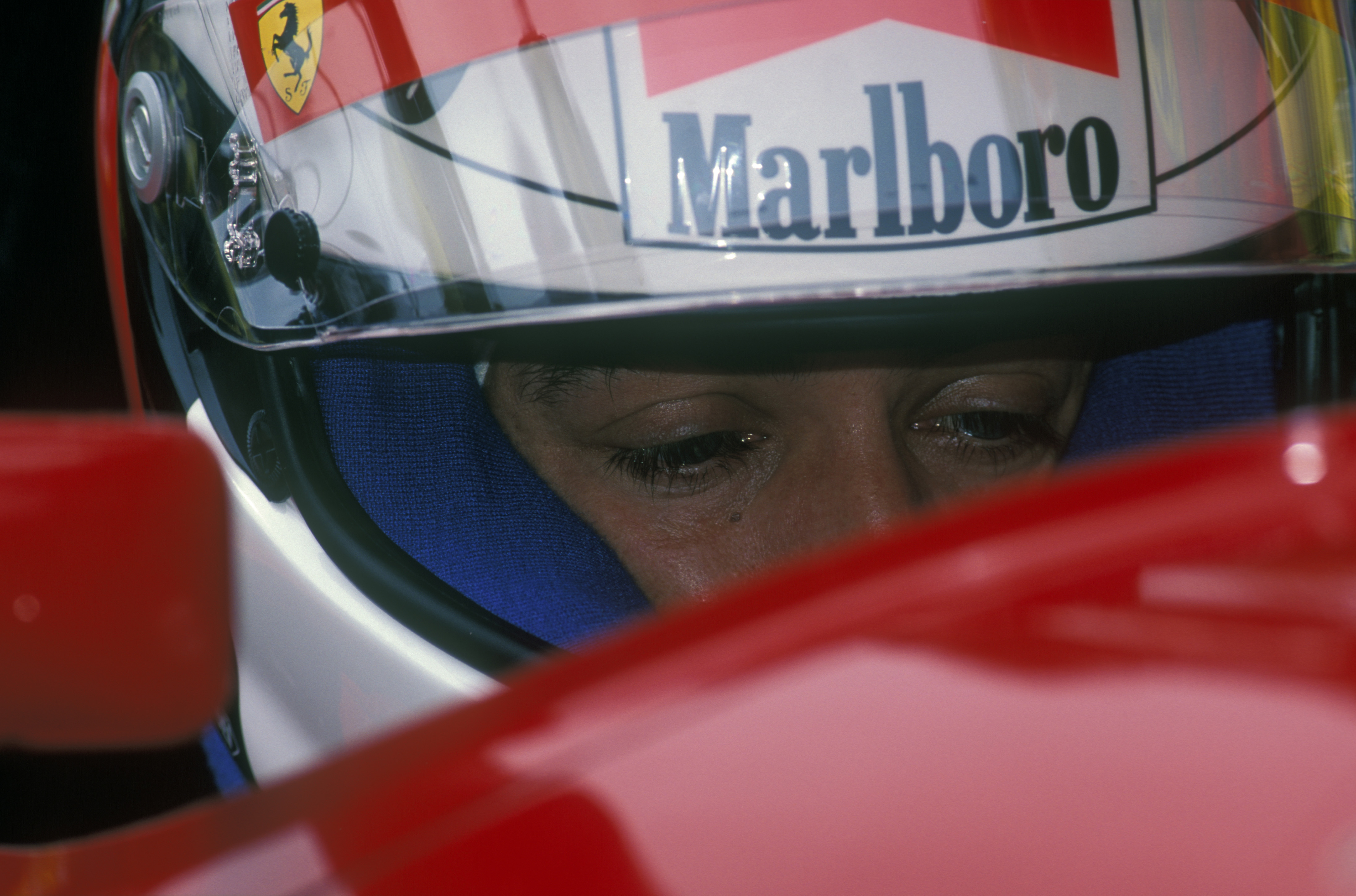
The greatest 45 minutes of Jean Alesi’s F1 career. Twenty-four remarkable laps that showed what should have been.
Lap eight: Alesi is 15th, 51s behind leader Michael Schumacher. He’s just wasted a heroic front row by jumping the start and getting a 10s stop/go penalty, then pitted for slicks on a drying track (diving for the pits moments after overtaking Johnny Herbert into 130R!), but then had been edged into a wild, bouncing, 360-degree spin over the gravel by Pedro Lamy’s Minardi.
Lap 12: Alesi is second, 7s behind Schumacher and about to take a second per lap out of the champion, having been 7-10s faster than the leaders thanks to that early slick switch and some glorious driving fuelled by anger over a penalty he disputed.
A transmission failure likely caused by the wild leap over the gravel ended Alesi’s race as he pressured Schumacher. Up to then, it was the drive of a true F1 superstar – like Alesi should have been if he could’ve accessed that level with any vague degree of consistency. – Matt Beer
Jarno Trulli – 2009
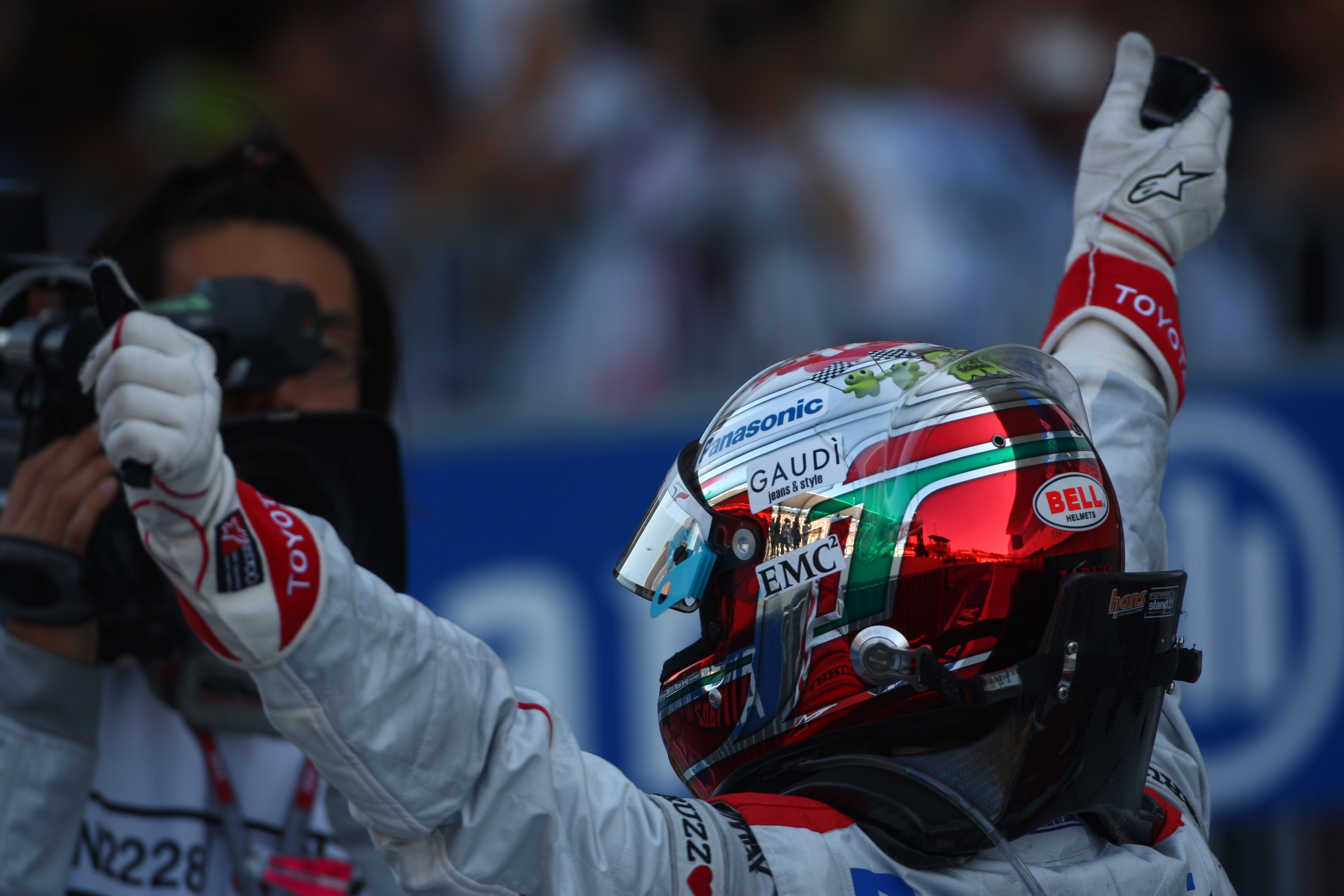
Toyota’s future in F1 was the subject of intense speculation ahead of its home grand prix in 2009, something the team was all-too-aware of. But Jarno Trulli produced one of the best weekends of his F1 career, believing that a win at home could sway the Toyota board to make the ‘right’ decision.
Trulli qualified second and despite slipping to third behind Hamilton at the start he was able to regain the position with a well-executed two-lap overcut at the second round of pitstops. He finished within five seconds of winner Sebastian Vettel in a Red Bull that was, at this stage of the season, quicker than the Toyota.
What was remarkable about Trulli’s performance was the consistent pace he delivered. For a driver who could be stunningly fast, but erratic, it was a reminder of what he was capable of when he was at his peak. – ES
Nico Rosberg – 2016
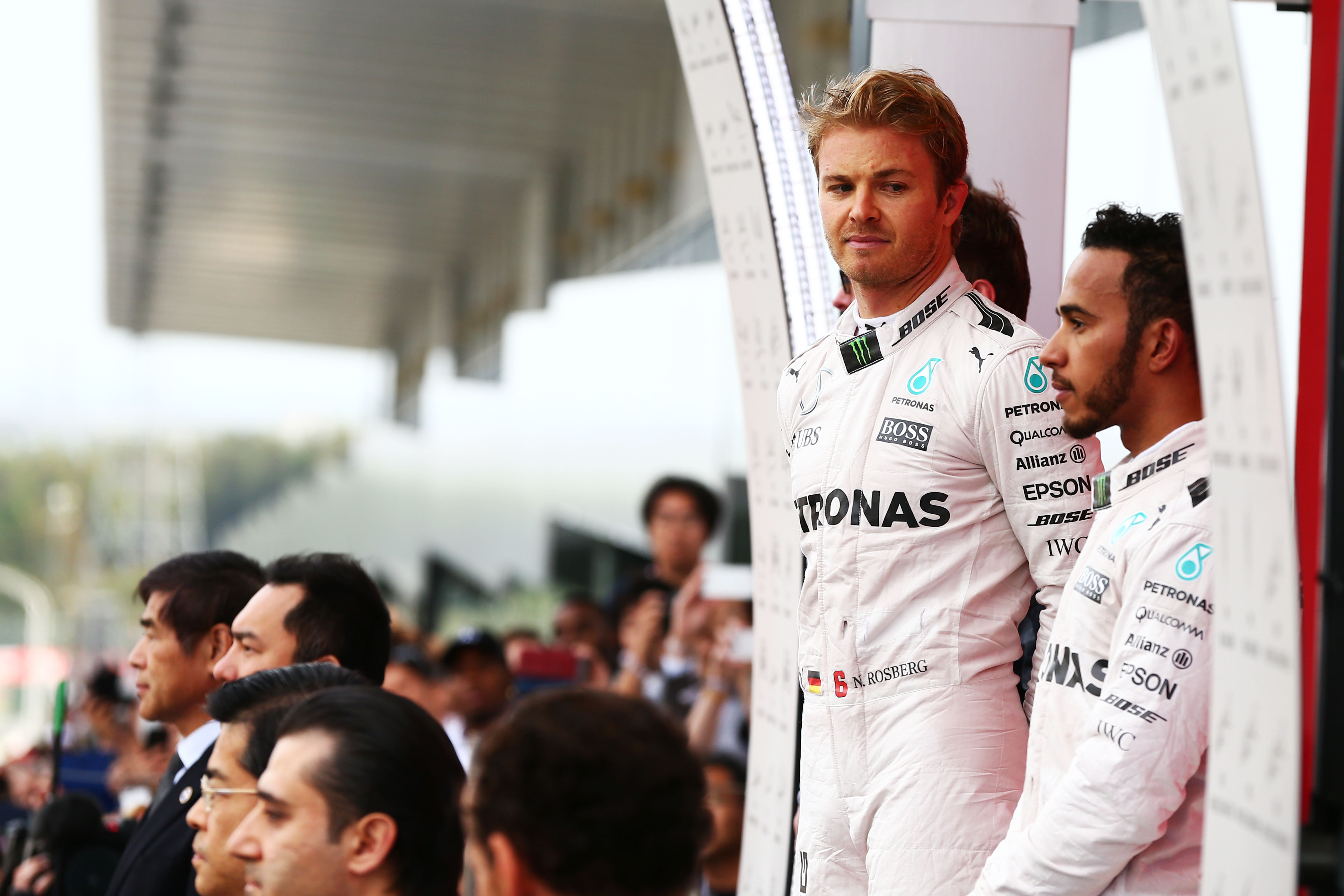
This was not a display of crushing dominance or unparalleled speed in difficult conditions, but rather a driver operating at the peak of his personal powers, grasping his moment of destiny and beating the toughest of rivals by the potency of marginal superiority.
This race was pivotal in placing the outcome of the world championship in Rosberg’s hands. On one of the most challenging F1 circuits of all, Rosberg topped every practice session, took pole position and won the race. This meant he wouldn’t need to win again to become world champion.
Hamilton was perturbed by Rosberg’s pace advantage, so diverged on set-up in a wrong-headed attempt to turn tables. Hamilton reverted to Rosberg’s set-up for qualifying, but missed out on pole by just 0.013 seconds.
Rosberg stopped cycling in the middle of 2016, in order to shed a crucial kilo of leg muscle without dieting. He later credited this for maintaining that vital qualifying edge over Hamilton when it mattered most.
This was the last of Rosberg’s 23 grand prix victories, and easily the most significant. Less than two months later, he retired as world champion. – Ben Anderson
Damon Hill – 1994
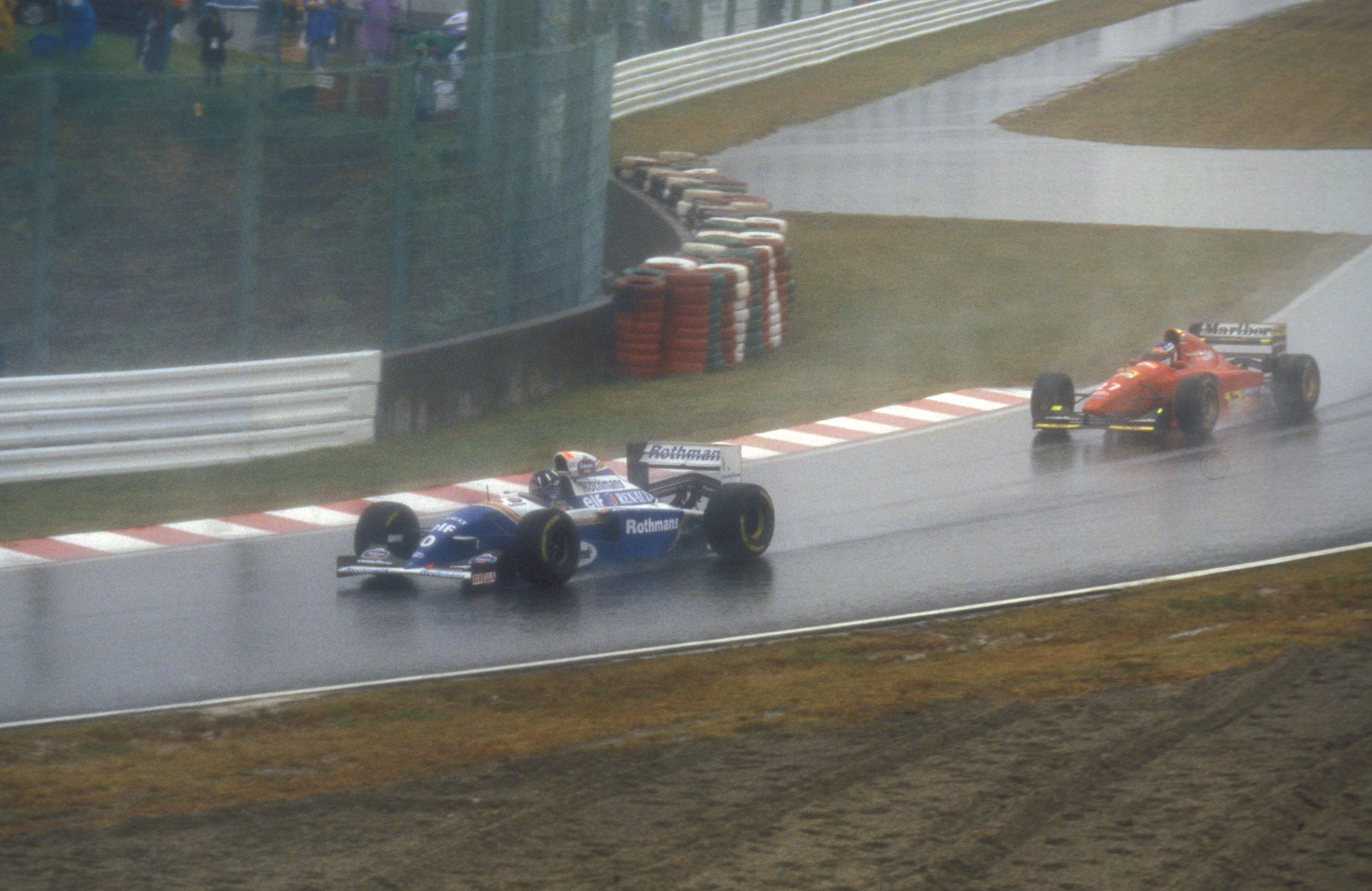
It’s no surprise that Damon Hill chose this race as his greatest in F1, given he beat Michael Schumacher in a straight fight in wet conditions at Suzuka with the world championship at stake.
This was the last F1 race to be held based on aggregate times after a stoppage. That red flag period came early on thanks to a heavy downpour and created the unusual situation that Hill had to ‘time trial’ his way to victory. He had to outpace Schumacher as overtaking on track was not necessary
With Schumacher on a two-stopper and Hill one-stopping, the result was in doubt right down to the final lap. Hill crossed the line a virtual 3.365s ahead of Schumacher. – ES

